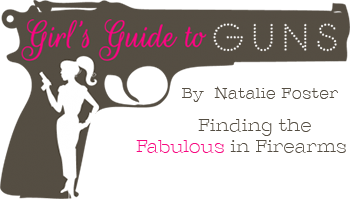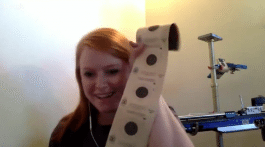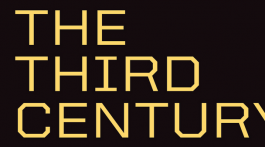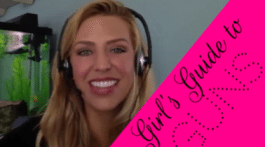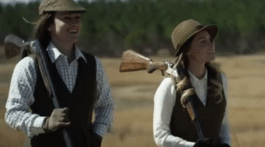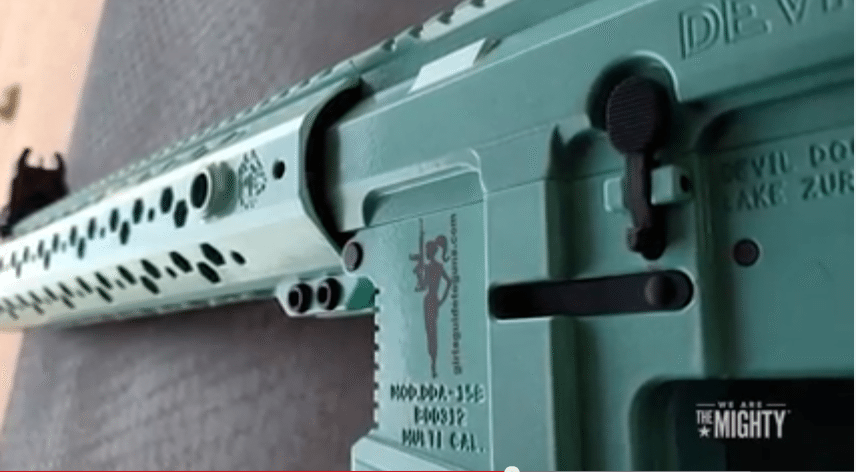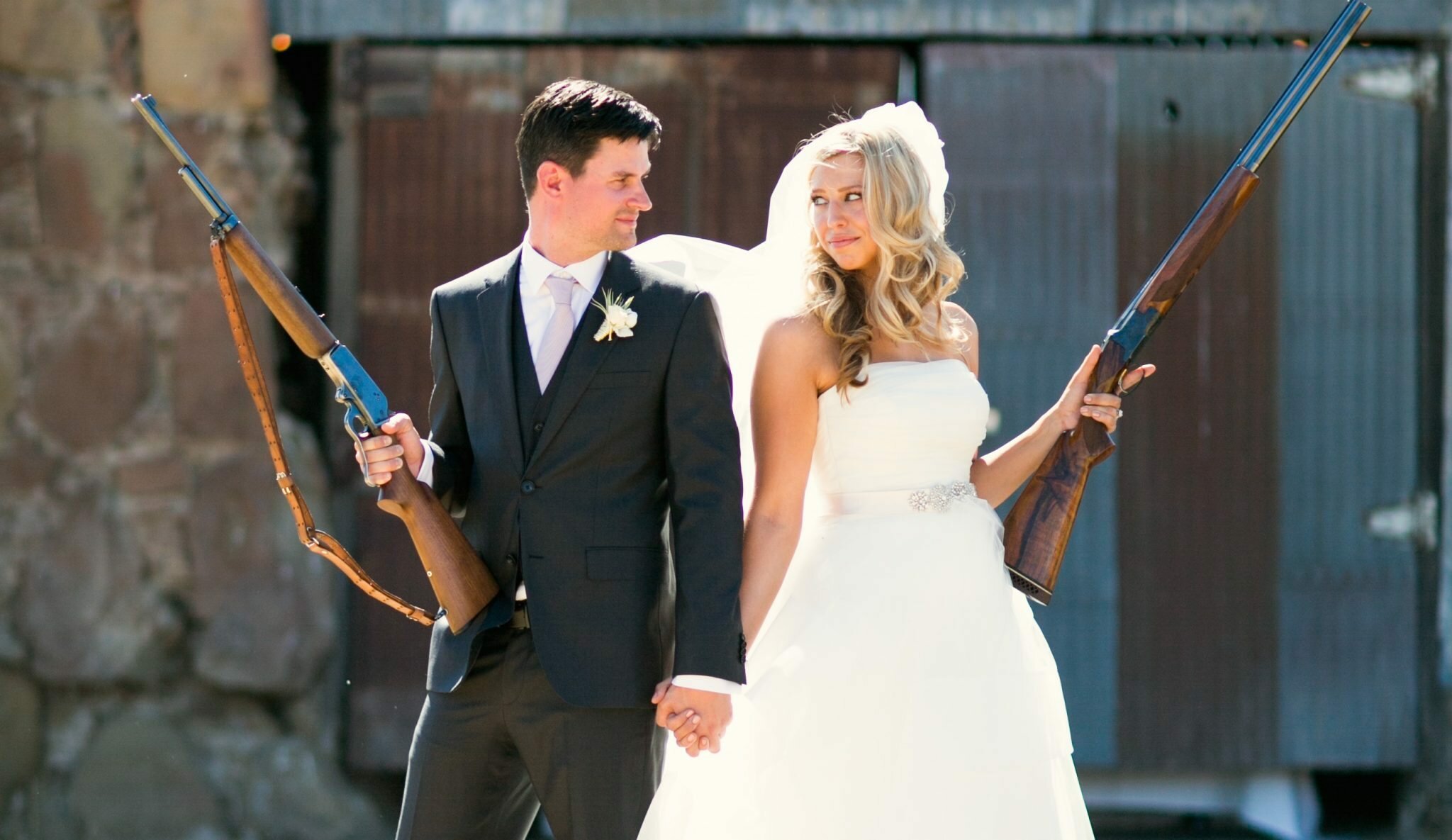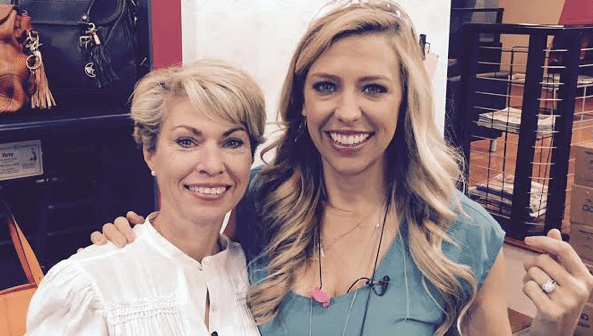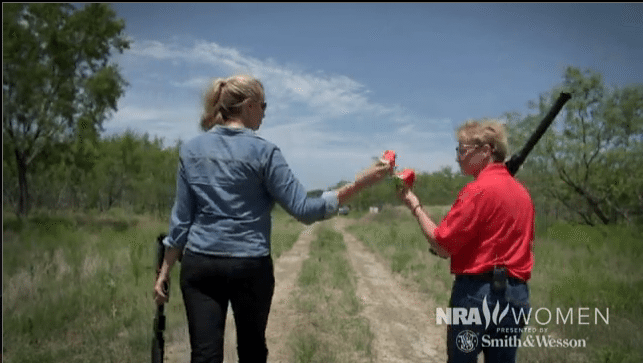Laura Burgess got her start in the firearms business with what’s now know as Sig Sauer, working her way up from temp to Director of Public Relations. She founded Laura Burgess Marketing in 2003 as a one woman operation. It’s blossomed into a family affair with her husband and daughter joining the company in 2009. Laura has worked with many major and well known companies within the industry. We had the opportunity to hear about her experience and where she sees the firearms industry going into the future.
Natalie Foster: Tell me a little bit about you. How did you get in to the firearms industry to begin with?
Laura Burgess: I came in to it in a backwards kind of way. My father was military so I was no stranger to firearms and had been on firearms ranges from the time I was a kid, but I never really thought it was something I’d pursue. I had other lofty ideas, had gone to college, had a family… that kind of thing. I had my own business, a children’s clothing business, in fact. After the economy went south in 1990-91 and we had a warm winter in which there was no snow. The main product that we made was for kids in the snow. After that tough year we had to pack it in. I ended up going to a temp agency saying, “I’ll take anything – right now, please!” They ended up sending me to a brand new facility in Exeter, NH. When I got out of my car all dressed up ready for the new job I met a gentleman in the parking lot. He was a very friendly guy with a slight Southern drawl. As we walked in the building I said, “So what do you do here.” He pointed to a picture on the wall and said, “Guns! We make guns!” So there I am in my dress and my new job was in the warehouse, of all places. That’s where I started as a temp. The company was then called Sig Arms. They were out of Virginia and had just moved to their new facility. There might have been 30 people in the plant at the time. There was not a machine to be seen. There were very few women in the facility and I ended up being hired on full time after I pestered them for about a year. Within a very short amount of time after that I became the first female manager within the company – I became the warehouse manager. That was interesting. I learned an awful lot about not only firearms, but also the manufacturing process, import/export, logistics – all sorts of really interesting things. Of course these were things that had nothing to do with what I went to school for. In about 1997 someone must have pulled up my resume and seen that I had a degree in advertising. They needed someone who could do marketing, so about two months before SHOT Show they pulled me up and told me that they had decided to have a brand new booth and the whole nine yards. And I had no clue what I was doing. I had never been to an event within the shooting industry. I had no idea how to market firearms whatsoever. But the next think I knew, I was packed up and shipped off to my first SHOT Show. And that was an eye opener. {laughs} It’s just a big candy store with every type of product available – from duck calls to all sorts of different types of guns and just a host of all sorts of characters. My job was to work primarily with the writers. A lot of these people were industry icons and just a great group of people. They helped me out in my job tremendously. I stayed in that position with Sig until the late ’90s when the dot-com thing was happening. I then went to a software firm, which was interesting in that I came from an industry where the communication flood gates were always open – people were always talking to each other – and I walk into a software company where all you heard were keyboard keys clicking. Well, that and me laughing because I was talking to all my gun buddies on the phone. In about a year Sig Arms pulled me back in and gave me
the position of Director of Public Relations and Corporate Communications. I was there for three years before I left and started my own company. The reason I started this company was, at that time, there weren’t a lot of PR firms out there that worked with the smaller and mid-size companies or did project-based types of PR. Also, many of the writers who had become my friends told me that they had a difficult time reaching the marketing companies and getting product. I thought this was a great opportunity to see if I could fill that gap. And that’s what we did. I was on my own in the company until a couple of years ago when my husband joined me and took a huge load off of me. He had always been working within the company handling the IT and the financial side – and he was with me at every trade show, and a lot of people knew him so it was just a matter of time before I said, “HELP!” Then a little over a year ago we brought our daughter aboard. After paying through the nose for a high quality education, she spent a couple years in Boston doing events predominantly in social media. Right before she came aboard we started to see a little paradigm shift within the industry – this real need to connect with the young and new shooters, and an inability to find a way to communicate with them. A lot of companies have a fear of opening that door to new media for the fear that they can’t close it or that they’ll be overwhelmed. Ashley, [my daughter], has been a real advocate for new media for our clients and she’s brought every single one of them aboard. So that’s where we started, and that’s where we are today.
NF: Wow, what a story! There’s so much in there to talk about. You know, the new media really is so important. But the firearms industry doesn’t seem to be hurting due to any reluctance to jumping in to social media. The industry is growing, am I right?
LB: Certain aspects of it seem to be growing. It’s sort of like a tide. In certain areas we are losing people: in the traditional hunting areas, for instance. Hunting is increasingly expensive and it seems to be more of an older generational activity. With the cost of ammunition, travel, and permits it can get very, very expensive. The target shooting aspect is one part of the industry that is growing. You  can spend a lot of .22 ammo and just have a great time all day. Then from there you can move in to the competitions – you see a lot more rim fire and family-oriented competitions that are starting up. That area is definitely growing. The funny thing is with women, being one myself – when I started out shooting within the industry I had a co-worker spend a great deal of time getting me familiarized with the firearms systems there and really coaching me on the safety, the safety, the safety. Drilling it in to my head, so by the time I held my first gun, my hands were sweating so badly. I was so nervous! It was something I just really didn’t feel very comfortably with. For a long time I had difficulty in shooting, specifically with handguns. I enjoyed shotgun and found that rifle shooting was an awful lot of fun because you are trying to get farther out and keep it within the bulls eye. With the handgun it took going back to that same gentleman I had met many years ago on my first day at Sig Arms to work with me on what I had developed, which was a flinch. Again, working with .22s I was able to relax, get a feel for my trigger pull and just enjoy myself. No pressure there. That’s what I think is important.
can spend a lot of .22 ammo and just have a great time all day. Then from there you can move in to the competitions – you see a lot more rim fire and family-oriented competitions that are starting up. That area is definitely growing. The funny thing is with women, being one myself – when I started out shooting within the industry I had a co-worker spend a great deal of time getting me familiarized with the firearms systems there and really coaching me on the safety, the safety, the safety. Drilling it in to my head, so by the time I held my first gun, my hands were sweating so badly. I was so nervous! It was something I just really didn’t feel very comfortably with. For a long time I had difficulty in shooting, specifically with handguns. I enjoyed shotgun and found that rifle shooting was an awful lot of fun because you are trying to get farther out and keep it within the bulls eye. With the handgun it took going back to that same gentleman I had met many years ago on my first day at Sig Arms to work with me on what I had developed, which was a flinch. Again, working with .22s I was able to relax, get a feel for my trigger pull and just enjoy myself. No pressure there. That’s what I think is important.
NF: Yes, so important. Those are some great things for a new shooter to hear. What are other points that you would make to a woman who has never shot before?
LB: I think one of the best things you can do is talk to your local NRA chapter – they have instructors all over the place and they’re great people to get you familiarized with firearms and safety and shooting. Also, a lot of the local shooting ranges will have instructors who are pretty well versed. There are schools out there that have “women’s only” courses. They find that when they get a bunch of women together that have not shot, it’s a different way of teaching. When they change their way of teaching from men to women, they find that women can relax. They enjoy the sport more and one of the interesting things I’ve heard from instructors across the board is that women, because we’re not competitive in learning, really, we’re more apt to really pay attention and absorb the instruction faster. Oftentimes they’ll find that if there’s men and women on a range, the women are really listening and are actually probably “on paper” more times than the guys are. The guys are probably trying to show off a little or assuming that they already know everything. A lot of instructors recognize that and have changed the directive of their training to compensate for that.
NF: We really do learn so differently. One of my recent male tactical instructors talks to me like a guy. And guys generally respond to ribbing and “motivational” put downs, but that just hurts my feelings. {laughs} I don’t respond to that. It makes me never want to come back.
So in your tenure in the firearms industry have you come up against any skepticism or anti-female bias or the “old boys club” at all?
 LB: You know, occasionally you’re gonna find a character here or there but I think you’ll find that in any industry. Honestly, I feel that the industry is extremely receptive no matter who you are, what gender you are, how old you are. I think within any industry, whether it’s construction or guns, or whatever, it’s how you come in that determines how people treat you. If you come in as an individual embracing the industry being respectful and wanting to learn, I think that’s going to be well received. As I said, there are a couple individuals out there who might not be receptive, but it’s also important for female shooters to gently educate them and to show them the way. {laughs}
LB: You know, occasionally you’re gonna find a character here or there but I think you’ll find that in any industry. Honestly, I feel that the industry is extremely receptive no matter who you are, what gender you are, how old you are. I think within any industry, whether it’s construction or guns, or whatever, it’s how you come in that determines how people treat you. If you come in as an individual embracing the industry being respectful and wanting to learn, I think that’s going to be well received. As I said, there are a couple individuals out there who might not be receptive, but it’s also important for female shooters to gently educate them and to show them the way. {laughs}
NF: I’m with you there. Those are such good points. What are some of the highlights or high points of the job for you?
LB: I think being the first female manager at Sig Arms was a real high point for me. Also being one of the first PR firms to really embrace the new media and to really get out there be new media’s champion within this industry has been important. We consider ourselves a pretty nimble company. One of the best things about us is that we are able to react very quickly. We monitor things. We use whatever we can find what’s the latest gadget, application, whatever, all for the benefit of our clients. And also for the benefit of the users, too. To give them direct company access – to be able to communicate and basically channel and change the industry as they, the consumer, see it. They’re the ones that should determine the product. It shouldn’t be an engineer, it should be the customer. That, I think, will become more apparent as social media becomes more of a marketing tool.
NF: It’s exciting to see that you guys are on the cutting edge, the forefront of all of that. So let’s get down to the nitty gritty. What do you love about shooting?
LB: The camaraderie. What’s the common thread among handgun, shotgun and rifle? Camaraderie. When I’m out there with friends or family and we’re just enjoying being with each other – that’s the best part. We just moved to North Carolina and joined the Cherry Point Skeet Club. There we are out there – don’t know a soul. People are as nice as can be and you’re just part of the fun and part of the camaraderie right off the bat. That’s one of the things I love. People are also always willing to give you wonderful advice, if you want them to. The main thing is just being outside and being with people in a relaxed atmosphere.
NF: Where do you see the industry headed for women?
LB: When I started in the 90s you would probably be pretty hard pressed to find any female CEOs in the industry. If there were, it was either because their husbands had started the business and had either retired or passed on. There just didn’t seem to be any incentive for women to come in and start a business within the industry. It was considered a “good ol’ boy” industry even in the time that I started. I think what’s changed is that women are coming in and don’t want to just be the pretty little girl in the booth, they wanted to actually be responsible for making the deals, selling the product, showing the product, talking about the product, demonstrating the product. I think women have significantly changed how the industry goes to market today. You see this tremendous influx of pink guns. We’ve worked with a number of companies that have introduced them. They do so not only to identify with women but also to support women’s causes such as breast cancer awareness. One of the fastest growing segments of social media is over 55 year-old women. And the reason they’re using social media is because it’s a great way to reconnect with your high school friends or you can have the grand-kid on the knee and be able to chat with other women and talk about those things. They might say, “I’d like to go shooting. What do I do? Who do I talk to? What would you recommend?” It’s a safer atmosphere for them to do that in the confines of their home. And then they’re breaking out and they’re forming these new groups and they’re going on adventures of their own based upon common interests, including shooting. I think that you’re gonna see an increase in women shooters. And I think that’s important on a couple levels: (1) More women are increasingly the decision makers within a family; and (2) Since the family dynamic has changed so much, often times if there wasn’t a dad or an uncle around, a kid might never have the shooting experience. With women taking the lead in this I think it can help the industry as a whole with the next generation. Moms are taking their kids out. There are more mother and daughter types of shooting events and it’s all just wonderful to see. I think women could be the future of this industry in many ways.
NF: That’s really encouraging and cool to hear. How would you market to people who know nothing about the sport? There’s so much negative media about guns. How do we reverse the tide on that?
LB: I know the NSSF has been working hard on that. First and foremost, being informed is critical. Being able to point someone in the right direction – help them access information – is important. I know the NSSF and the NRA have a deluge of information available to help people have an understanding about legal issues and responsibilities with firearms. They can tell you where you can go and learn about firearms in a safe environment. For PR people I think the number one thing is to be the ears of the industry. Be listening. Especially on the social networks – be listening to people. What are they talking about? If people are anti- something, whatever it is, normally it’s because they don’t have knowledge. Or they may have had a bad experience at some point. If they have had a bad experience, if someone in their family has been injured or killed due to a violent crime, helping them to understand that they don’t have to be a victim, too, and through responsible usage and gun ownership, not to be a victim. I think that’s one of the important aspects that we need to continue to educate people on. I think people are afraid that if you’re carrying a gun, that means you’re just gonna whip it out and use it or something and that’s not true. A lot of people who go through training learn that if you’re in a situation in which you’re in danger, the first thing you should do is get away and call for help. The last thing you do would be to pull out your gun. Gun owners, I think, are actually more responsible.
NF: I think you’re right on about that because we take the time to do the training and bottom line, we don’t want to go to jail.
LB: Right! Not a good place to be. People who are versed in it are very conscientious about their responsibility.
NF: So true. We just need to get the word out about that, I think. Thank you for leading the charge on so many fronts. What is the primary message you are focusing on right now?
LB: Just to manufacturers – there is a whole new group coming in to this industry who are passionate about firearms. A lot of them are young and communicate in different ways from the ones we used. They receive their information differently than we did and I think we need to embrace them. It’s gonna be a learning curve for both sets, but it’s important for the survival of our industry. And besides, it’s such a great sport. Why keep it to ourselves?
